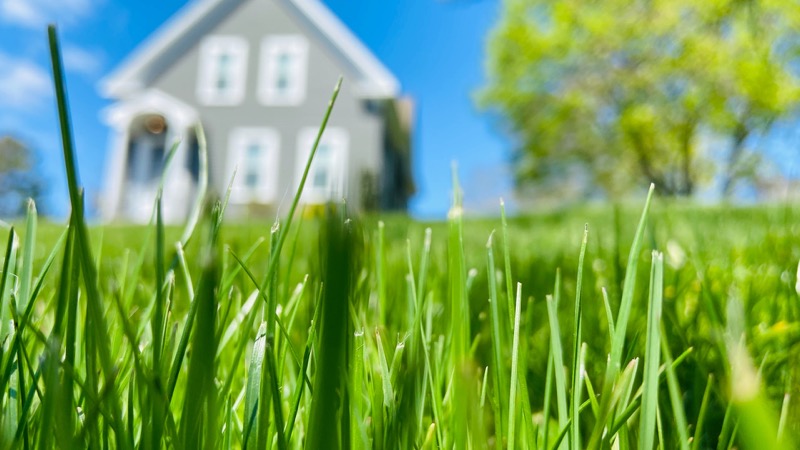Proper lawn care includes using an aerator and dethatcher, which have different but very important roles. Both tools have similar functions that promote healthier and stronger root systems and proper circulation of water, nutrients, and air. The question now is whether to dethatch first or aerate. To clarify which one comes first, let’s discuss these lawn care practices in detail.
Dethatching
Thatch consists of a layer of organic materials like roots, stems, and dead grass on the ground’s surface. It provides great benefits to your turf in the proper amounts, but when there is too much, it becomes a barrier to oxygen and water entering the soil.
A thick layer makes it difficult for fertilizers and air to reach the root system. This is where dethatching comes in. When properly dethatched, your lawn will achieve the following benefits:
- Proper contact between the soil and fertilizer for nutrient feeding
- Proper air circulation
- Makes your grass look greener
- Natural reduction of thatch
Aerating
Lawn aeration creates tiny holes in the soil, allowing proper air circulation and nutrient and water absorption of the roots. In other words, it loosens the ground, especially when you have hard and compacted soil.
This practice can be done through a manual process, which uses aerating tools and machinery to create holes in the ground, or through a liquid method, which uses a solution sprayed on your lawn to aerate the soil.
The common tools for manual aeration can include:
- Spiked shoes
- Garden weasel
- Yard butler
- Tow-type spike aerator
You have several options for this method, but it’s laborious compared to the liquid aerator option. If you prefer the spiked shoes, for example, you will need to walk in your yard to do the manual aerating, which can be physically exhausting when you have a large lawn. This is why opting for the liquid method is the best choice.
It’s the cheapest and quickest way to aerate your lawn. You’ll only need to buy the liquid solution, mix it with water in a sprayer, and spray it on your lawn. Not only that, the liquid aerator has added nutrients that your turf can benefit from
Also, aerating your lawn depends on the type of soil you have. For sandy soil, once a year is enough, while for clay soil, twice or thrice a year is advised.
Should You Dethatch First?
Yes, it’s best to dethatch first and then aerate. Doing so helps you get rid of excess organic debris on your turf and allows you to apply the liquid aerator (if you prefer this method) more effectively. Just make sure to check if your lawn needs aerating or not.
However, if your layer of thatch is thin (just a little over the ideal amount), you can quickly remove the excess using a rake or other dethatching tool.
Identifying Too Much Thatch
So, how thick is too thick?
Half an inch is an ideal layer because it has beneficial microorganisms that feed on the organic matter and break it down into nutrients. However, when the layer is more than this, it’s already considered too thick for the grass and soil.
A very thick layer makes the grass develop shallow roots as they try to reach the soil’s surface for water instead of going deeper into the ground. Your grass will have a low resistance to drought, easily develop diseases, and grow thin because of a lack of nutrients and hydration.
Which Is Better, Dethatching or Aerating?
Timing is key when using both lawn care practices. They are beneficial when loosening the soil and reducing the amount of thatch. Aerating can both minimize thatch and aerate the soil. However, dethatching is ideally best for overseeding your lawn and removing organic matter debris.
The Takeaway
At this point, it’s now clear that dethatching comes first and then aerating. You need to remove the excess layer of mulch only before using lawn aerators, given that the soil is hard and compacted. So, always check your turf regularly for the needed maintenance you should perform at a certain time in order to keep a healthy lawn.





